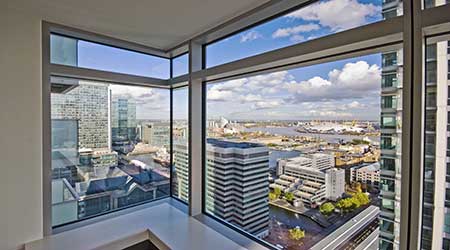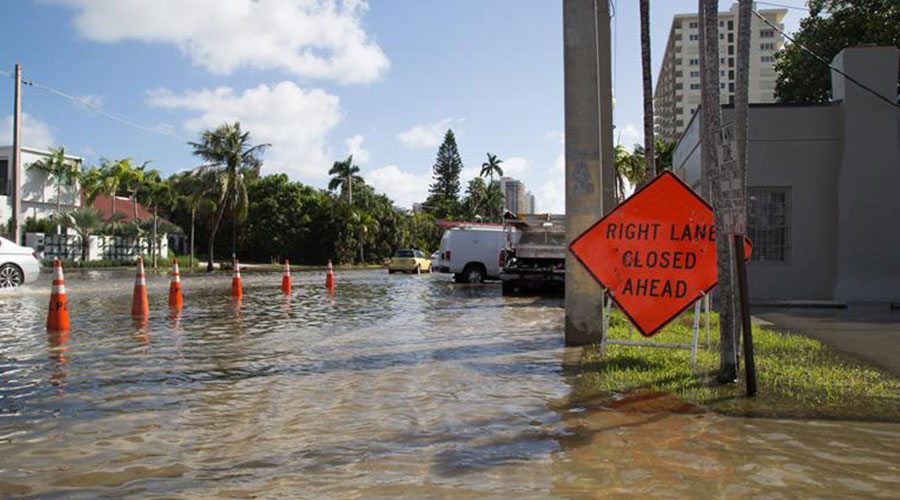High-Performance Issues Link Building Resilience and Sustainability
Last of a 2-part article on understanding the link between sustainability and resilience in energy and water efficiency, building envelope, stormwater, and other areas
There are two other key potentially high-performance areas where building resilience and sustainability complement each other: building exteriors, envelope, and ventilation, and water and stormwater issues. Here, high-level experts offer practical advice in these areas on how to implement resilience and sustainability together.
Exteriors, Envelope, and Ventilation
"Baby It’s Cold Inside" is a cleverly titled report by New York City’s Urban Green and the U.S. Green Building Council on the effect of a poor building envelope on the inside temperature when a building no longer is able to condition or heat space. A high-performance building with a high-performance building envelope, the report concludes, is much better suited to provide a habitable environment than a traditional exterior, whether in the winter or summer.
This is a concept called "drift temperature," and as Newman says, "a lousy building envelope is a huge problem." But an efficient, well-maintained building envelope minimizes the drift temperature, he says. (See chart at bottom titled "Indoor Temperatures During a Winter Blackout.")
This means that a building can be occupied comfortably much longer after the grid goes down. For buildings ranging from hospitals to high school gyms where people may congregate for safety after a natural disaster, this idea of minimizing drift temperature is critically important. One need only think of the horrific sweaty, humid conditions inside the Louisiana Super Dome following Hurricane Katrina to understand how important focusing on exterior, envelope, and ventilation are to both high-performance and resilience goals.
Strategies like operable windows, good insulation, cool roofing, and concentrating on air leaks (elevator shaft vents always open, for instance) are all examples of how focusing on high performance helps make a building more resilient. What’s more, focusing on these things has a payback because they save energy year-round, says Scheib.
Furthermore, if it’s possible to implement passive ventilation in a facility, that can be both an energy efficiency and resilience strategy as well. In the aftermath of Hurricane Sandy in New York City, Newman explains, many fancy Manhattan glass office towers had no power, and so ventilation stopped too. The buildings heated up during the day and developed mold. Some parts of these buildings could not be re-occupied again for two weeks longer than most other area structures, to allow for mold removal. That obviously has huge bottom-line implications for any business.
Water and Stormwater
Buildings that are able to retain stormwater from increasingly strong storms is a beneficial sustainability strategy (in terms of sewer savings) for those buildings, but just as importantly, good stormwater management helps make the community more resilient as well. Many communities — New York City and Boston, for instance — are discussing or have implemented changes to codes to require existing buildings to retain as much as the first 6 inches of rain in any storm.
Maximizing stormwater retention is critical, because "resilience is never just about the building," says Vaughan. "It’s about things connected to the building." Bioswales, green roofs, and retention ponds all have both sustainability and resilience benefits.
As well, simply being water efficient in facilities means both using fewer resources, and as with energy, being more resilient if the municipal water supply is cut off. Many facilities are implementing rainwater catchment systems, and recycling water to be used for toilet flushing and cooling tower makeup. New or revised regulations in some markets are easing restrictions on how recycled or collected water can be used.
"There’s not a huge reason to use potable water for these processes," says Newman. Using recycled or retained water is "a sustainability strategy, but it also takes away the risk of the cooling system going down, so that reduces risk," he says.
Ultimately, reducing risk is the goal in creating resilient, sustainable facilities. "The concept of resilience is really about recognizing the changing risk environment," says Newman. "We have to think about ways in which we can prepare for things we don’t know. And that’s what resilience is really about."

Related Topics:














